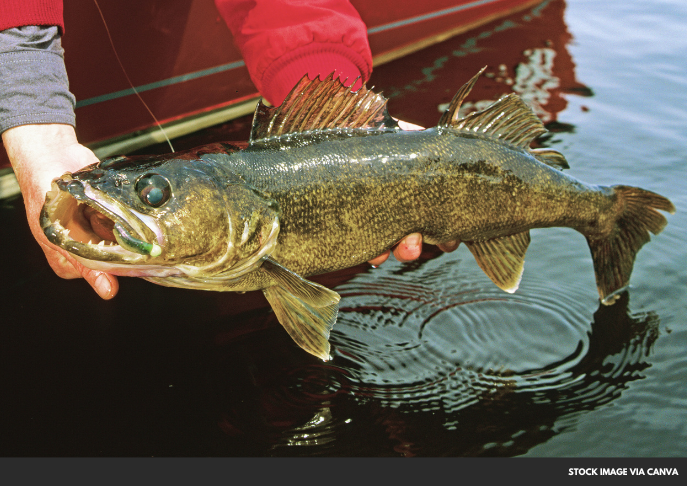New research suggests that the size of walleye in Lake Erie is largely determined by the size of their parents, challenging previous assumptions about fish growth factors.
Scientists at Ohio State University conducted a comprehensive study of walleye populations in Lake Erie, analyzing data spanning over three decades. The results, published in the journal Ecological Applications, indicate that genetic factors play a more significant role in walleye growth than environmental conditions like food availability and temperature.
Lead author Zoe Almeida expressed surprise at the findings. "We really did think that the recent environment would have the strongest effects," she said. "When you're thinking about factors that affect growth, you think you have to account for temperature and prey. And in reality, those signals were so small themselves that they weren't the strongest in any way."
The study examined walleye specimens aged three to five years old, considering various factors including parental size, spawning conditions, environmental variables, and population density. Researchers found that larger mothers and colder winters were associated with larger offspring.
These findings have significant implications for fisheries management. Understanding the genetic factors influencing walleye growth can help wildlife officials better predict population trends and set appropriate fishing regulations.
For anglers eager to try their luck at catching walleye, Lake Erie remains a prime destination. The lake's walleye population is considered robust, offering excellent opportunities for both recreational and competitive fishing. Those interested in walleye fishing techniques might find helpful tips in Baitium's guide on how to catch walleye.
Almeida believes the study's implications extend beyond walleye. "What happens in early life or what happened to parents might be more influential than what is happening currently in their environment," she explained, suggesting that similar genetic factors could influence growth patterns in other species as well.
As fisheries managers and conservationists continue to grapple with the complexities of aquatic ecosystems, this research provides valuable insights into the factors shaping fish populations. For those interested in the broader context of fishing and conservation efforts, Baitium offers a comprehensive look at whether overfishing remains a problem in today's waters.
MOST READ NEWS:
Five-Year-Old Angler Lands Potential New York State Fishing Record
Five-year-old Gregory Martin may have set a new New York state fishing record with a 1-pound-15-ounce pumpkinseed fish caught on Oneida Lake.
Officials Urge Consumption of Invasive Blue Catfish to Protect Chesapeake Bay
Maryland officials promote eating invasive blue catfish to protect Chesapeake Bay's ecosystem. Learn how this tasty solution aims to restore balance and support local fisheries.
Yellowstone Reopens Madison and Gibbon Rivers for Fishing, Firehole River Partially Open
Yellowstone reopens Madison and Gibbon rivers for fishing, with Firehole River under hoot-owl restrictions. Stay updated on park fishing conditions.
Maryland Angler Reels in Record-Breaking Blueline Tilefish
Maryland angler London J. Anthony sets new state record with 20.6-pound blueline tilefish caught off Ocean City, breaking previous 12-year-old record.
Fishing Buddies Break West Virginia Black Crappie Records Within Hours
Two West Virginia anglers break state records for black crappie within hours at Woodrum Lake, showcasing the state's exceptional fishing opportunities.
California Free Fishing Day: Cast Your Line on August 31
California Free Fishing Day on August 31 offers anglers a chance to fish without a license. Enjoy the state's waters and maybe catch your next big fish!
PFAS in Seafood: New Study Alerts Gulf of Maine Anglers and Consumers
New study reveals PFAS in seafood from the Gulf of Maine, raising health concerns. Learn about the risks, affected species, and tips for safe consumption of local seafood.
Don't Get Caught Without One: Texas Fishing License Renewal Deadline Approaching Fast
Texas fishing license renewal deadline looms. Learn about digital options, exemptions, and why you need to act now to keep enjoying Texas waters.
New York Adds August 31 to Free Fishing Days
New York State has expanded its Free Fishing Days program, adding August 31 to the list of dates when anglers can cast their lines without a license. This move aims to encourage more people to experience the joys of fishing in the state's diverse waterways.


